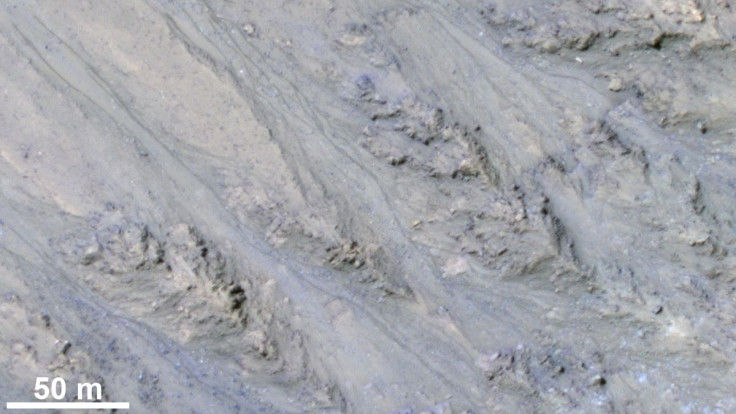Water On Mars? Streaks Visible From Space Are Actually Sand

Features on the surface of Mars that were previously thought to be evidence of flowing water have since been classified as granular flows, according to NASA. That means the dark features are actually likely grains of sand or dust that slide downhill and cause the dark streaks on the surface of the planet.
A camera on the Mars Reconnaissance Orbiter took photos of the streaks and researchers were able to determine that they only appear on slopes that are steep enough on Mars for dry grains to slide down dunes. The camera that captured the images is called the High Resolution Imaging Science Experiment, or HiRISE for short, and takes incredibly detailed photos in visible light. The research on the granular flows was published in Nature Geoscience Monday. That research says it’s unlikely that there is enough liquid water for even microbial life to survive those areas of Mars.
In addition to observed information about the flows, the research also includes proposed reasons for why the sand may flow the way it appears to, one being that there could be a small amount of water indicated by hydrated salts on the planet.
The streaks have been such a cause for confusion and debate among researchers in part because they vary by season. They appear in warmer seasons and extend downhill then come the winter season on mars they disappear again. This behavior is something typical of water on Earth and researchers don’t yet know how it could happen on Mars with something other than water, according to NASA. On Mars, they’re called "recurring slope lineae."
The data was so detailed that the researchers were able to crease three dimensional models of the steepness of the slopes and were able to look at 151 RSL at 10 locations around the planet. They found that the RSL occur on slopes with a steepness of 27 degrees or more, additionally they don’t flow on to more shallow slopes like water might.
One possibility is that the lines darken and fade due to some slight presence of water in them. There might be a connection between the way salts become hydrated on the planet and the RSL. If the salts pull water vapor from the air they can form drops of salty water that could create darker RSL. Then when the water evaporated, the RSL could fade or vanish.
"RSL probably form by some mechanism that is unique to the environment of Mars," the principal investigator on the research and the McEwen said, "so they represent an opportunity to learn about how Mars behaves, which is important for future surface exploration.
© Copyright IBTimes 2024. All rights reserved.











